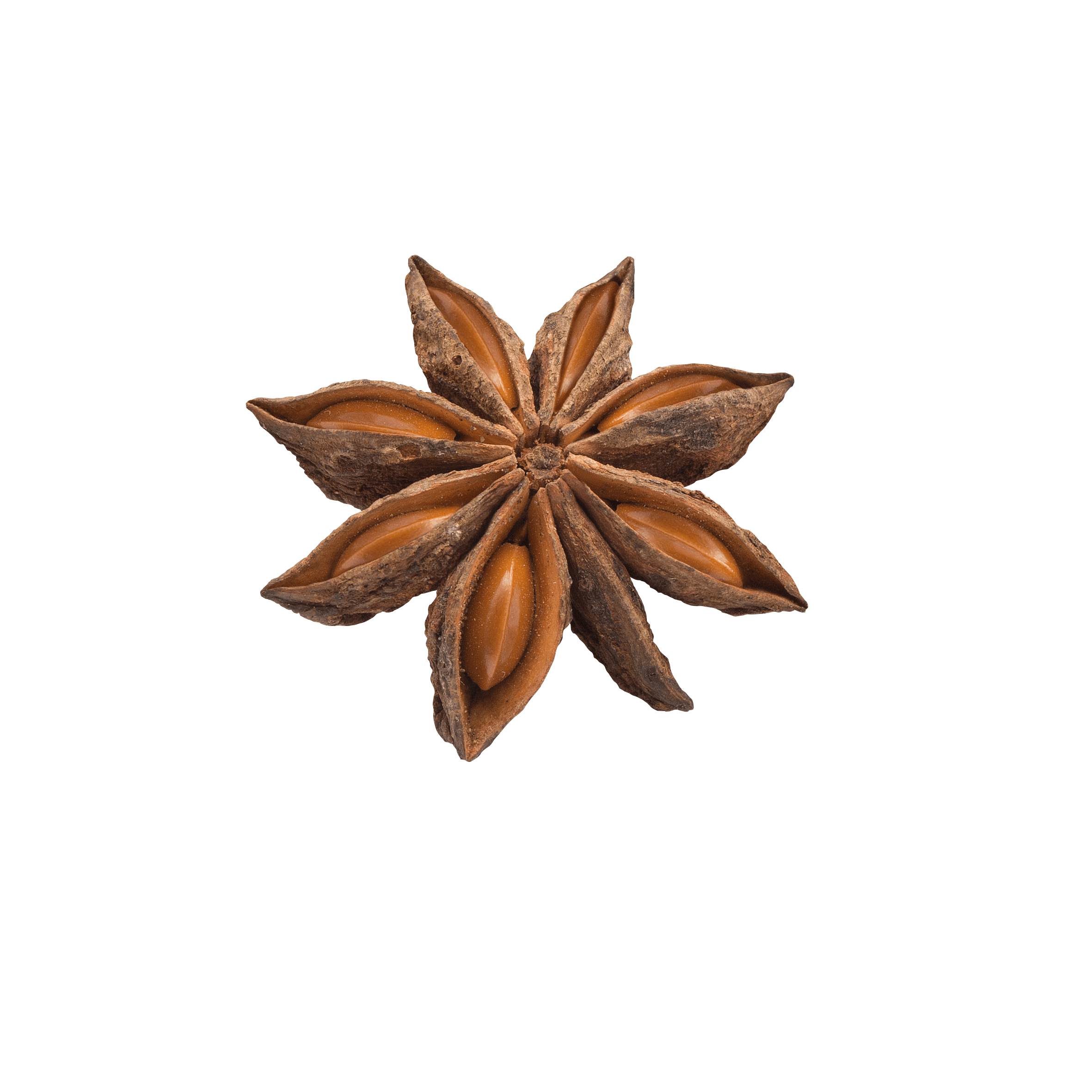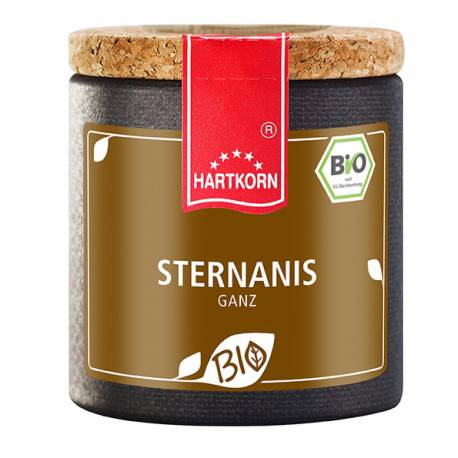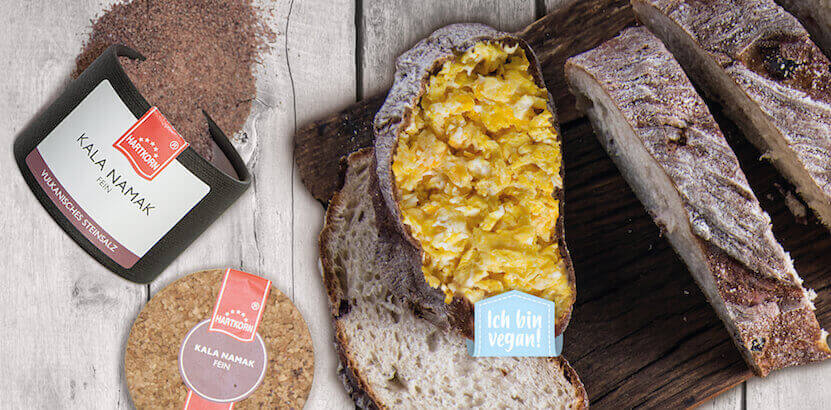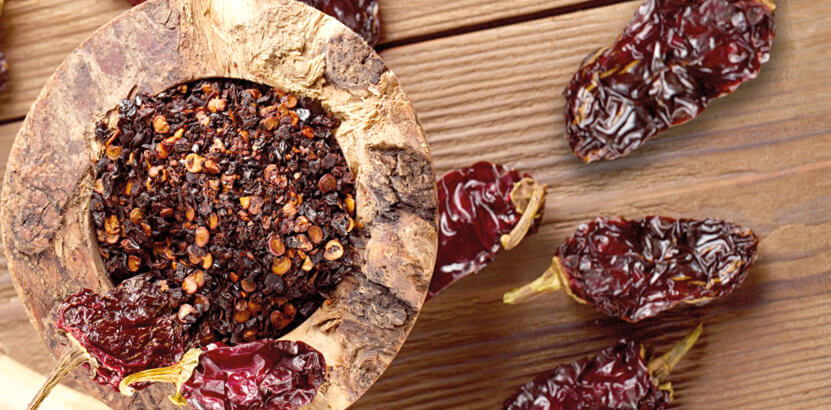synonyms: botanical family: origin: Classification: spice shape: taste: odour: use: Star anise smells strongly of anise and tastes burningly spicy. Like the actual aniseed, it is used as a baking spice in the kitchen and also in the baking industry. It is also frequently used in the confectionery, beverage and cosmetics industries. Its anti-irritant, slime-promoting active ingredients are used in pharmaceutical products to alleviate respiratory tract diseases. tip: Recipe suggestion: knowledge: Botany: Home & Distribution: cultivation & extraction: History: Star Anise
General information
Use
Things to know
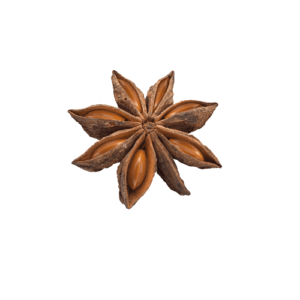 Botanical name:
Botanical name:
Illicium verum HOOK
Badian, Chnaanis
star anise plants
China, Vietnam, Cambodia, Japan
Spice
fruit
slightly burning, liquorice like
anis-like
A must for Chinese cuisine. (duck, chicken, pork, fish, fillings), baked goods, desserts, jams, plum jam, compote, coffee, tea
Put a star in an onion and place it inside a poultry or in a stew
Chinese Sol eggs: Boil the eggs hard and let them cool in water. Then beat them carefully so that the shell cracks but does not remove. Now place in cold water with soy sauce, salt, 1 star anise, 2 black tea bags and bring to the boil and leave to boil for 2 hours, always covered. Leave the eggs to cool overnight.
Cuisine: The essential oil consists mainly of anethole. Because of the similar composition, the cheaper star anise oil may be used for anise brandy instead of the expensive anise oil.
The evergreen star anise tree from the anise family grows to a height of about 6 m. It has leathery-tough, lanceolate leaves and greenish-yellow flowers. They develop into reddish-brown, corky-woody aggregate fruits, which usually consist of eight bellow fruit capsules, each arranged in a star shape around the central axis. Each individual boat-like capsule is about 10-20 mm long, tapers off to a point at the front end and pops open at the upper abdominal seam when ripe. Inside the capsule there is a yellow-brown smooth and shiny seed.
Star anise is native to southern China, but is now also found in other parts of Southeast Asia, e.g. Vietnam, Thailand and the Philippines, and is also cultivated in Jamaica.
Star anise trees are grown in plantations. The harvesting of the aggregate fruit can be done three times a year shortly before ripening. After drying, star anise is sold either whole or ground.
Star anise has been known in China as a remedy and spice for at least 3,000 years, but was brought to Europe very late. It came to Germany around 1700 and was first mentioned in 1726 in the pharmacists' tax of the Principality of Anhalt-Zerbst.
http://de.wikipedia.org/wiki/Echter_Sternanis

